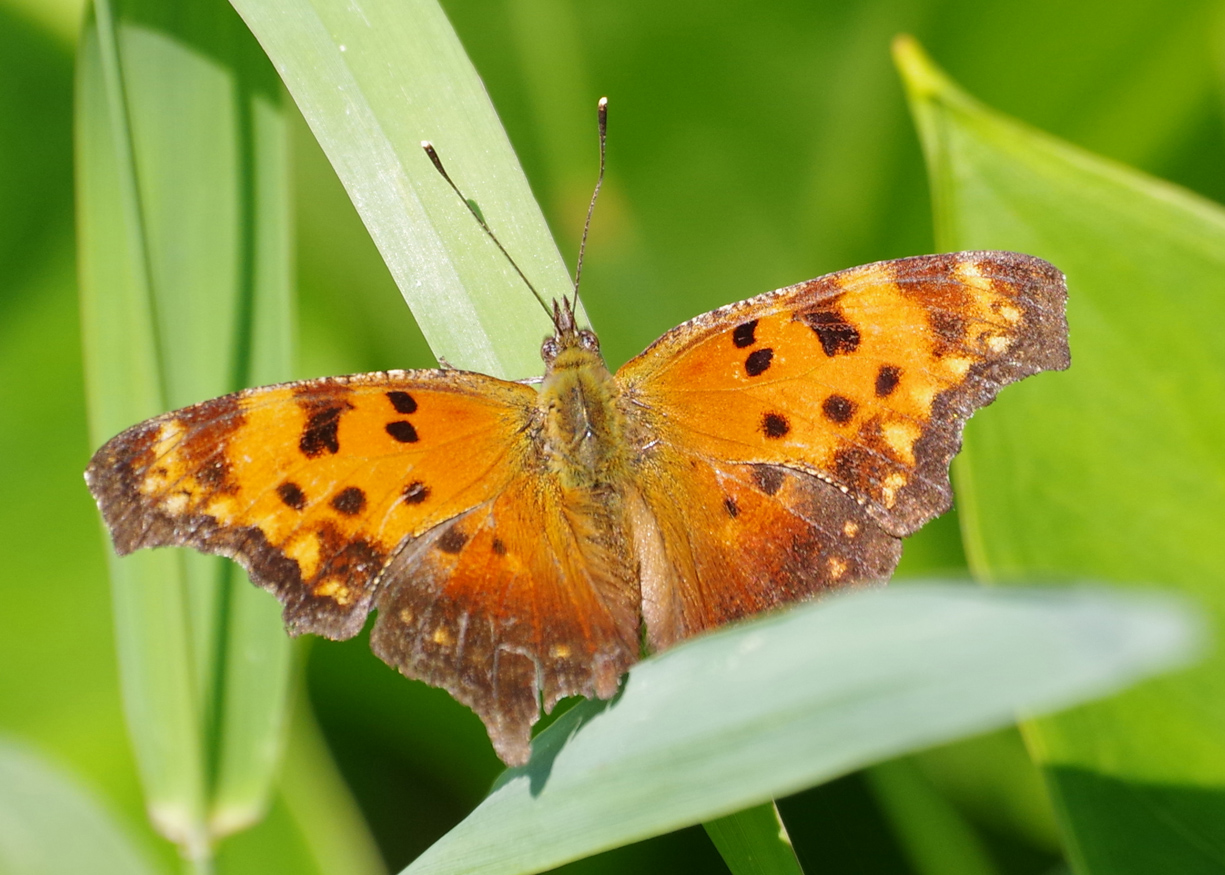
Gray Comma Butterfly The Other Comma
Howdy, BugFans,
Gray Commas (Polygonia progne) are in the Brush-footed butterfly family Nymphalidae – “brush-footed” because their front pair of legs is small and “brush-like” and tucked in close to their body https://bugguide.net/node/view/1386003/bgimage, making them look like four-legged butterflies.
These are butterflies with somewhat northern proclivities; they’re found across Canada and the northern part of North America but are mostly missing from our southern tier of states https://www.butterfliesandmoths.org/species/Polygonia-progne. In Butterflies of the Great Lakes Region, Douglas and Douglas speculate that their original (pre-settlement) habitat was probably sunny areas that opened up within dense woodlands when trees fell over and left a hole in the canopy. Today they’re found in clearings in deciduous and mixed woodlands, along stream edges, and along dirt roads, and also in gardens and yards. Mead, in Butterflies of the North Woods, says that they are “maybe the most widespread of all the anglewings.” The (fabulous) Butterflies of Massachusetts website suggests that Gray Commas “may be vulnerable to range contraction as climate warms.”
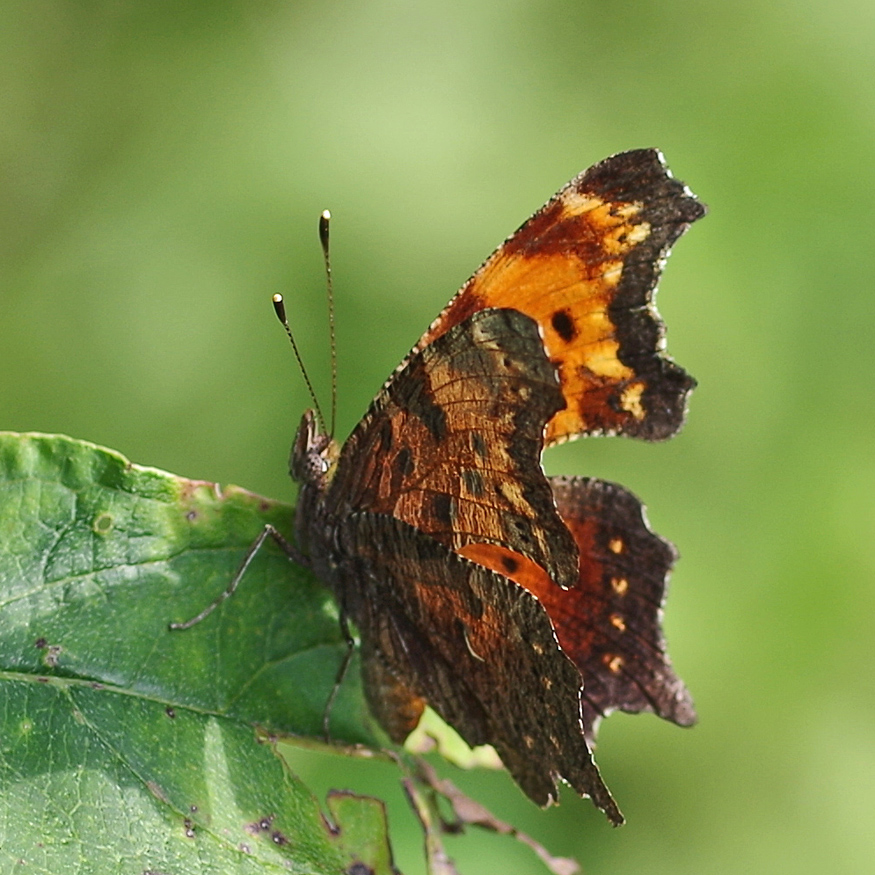
Because of the outlines of their wings, Question Marks and commas (genus Polygonia) are called anglewings. There are five anglewings in Wisconsin – Gray Commas, Eastern Commas and Question Marks are found throughout the state, and Green Commas and Satyr Commas live “Up North.”
They’re called anglewings because of the cut of their jib, and “comma” because of the silvery punctuation marks on the undersides of their wings. The Gray Comma’s comma resembles a Nike swoosh https://bugguide.net/node/view/197220/bgimage compared to the Eastern Comma’s thickened and hooked mark https://bugguide.net/node/view/1567724/bgimage, and the Question Mark’s question mark https://bugguide.net/node/view/1583855/bgimage.
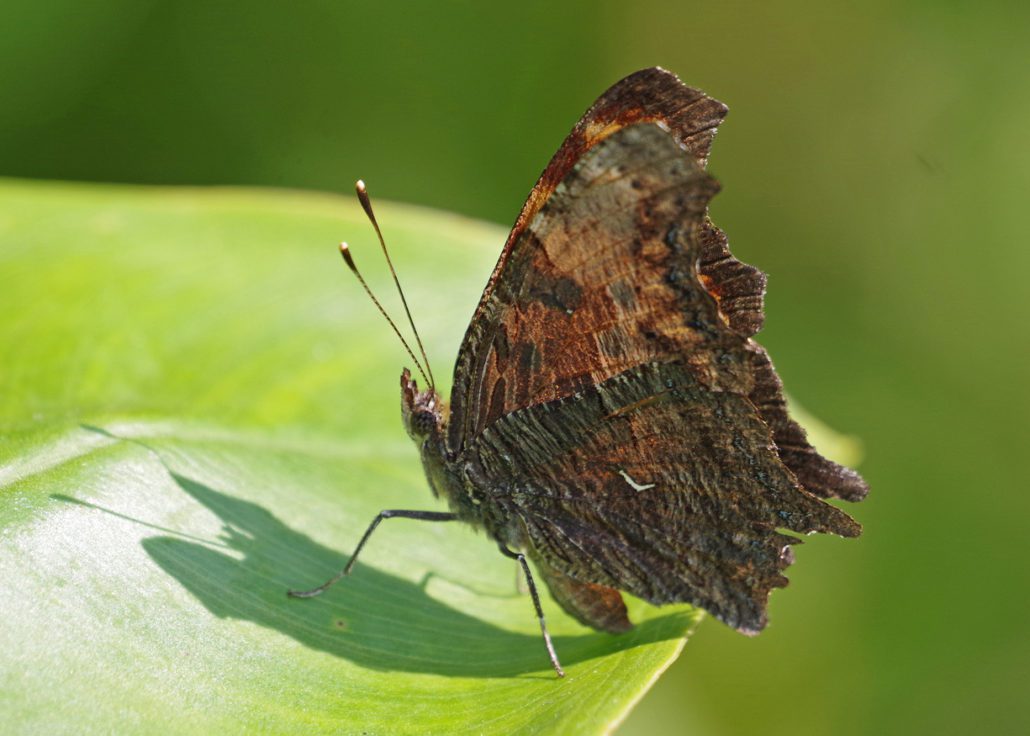
According to the Missouri Department of Conservation’s online Field Guide, “Congratulations if you can tell the difference between a gray comma and eastern comma! This shows you’ve definitely progressed beyond a “beginner” level in butterfly identification.” By that yardstick, the BugLady hasn’t quite arrived yet, but she’s getting closer. She likes taking their pictures and putting their images up on the monitor, pulling out a field guide, and worrying them a little bit.
Here’s why you have to look twice when you’re identifying anglewings:
Gray Comma – https://bugguide.net/node/view/1214968/bgimage
Eastern Comma – https://bugguide.net/node/view/1620700/bgimage,
Question Mark – https://bugguide.net/node/view/1774878/bgimage. There are some handy tips for distinguishing them at https://wisconsinbutterflies.org/butterfly/subfamily/17-true-brushfoots.
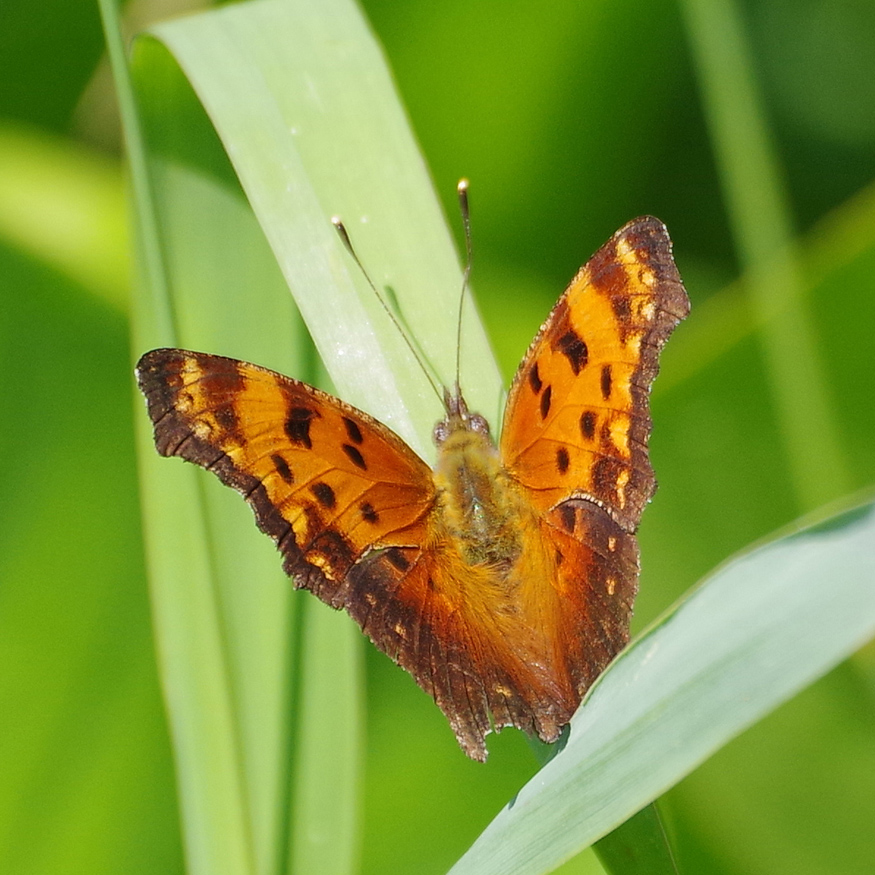
With a wingspread of about 2 inches, these are nice-sized butterflies, and seeing one with its wings open in the sunlight is a real treat! When they’re sitting on a tree trunk with their wings closed, https://bugguide.net/node/view/1937383/bgimage, they can be remarkably-well camouflaged.
Like other anglewings, there are two generations of Gray Commas each year. The second generation emerges in mid-fall, but instead of mating, they overwinter as adults, tucked away in a sheltered spot called a hibernaculum (they may fly briefly during a winter thaw). They emerge in April and May and go about the business of producing the summer generation. Like other anglewings, Gray Commas are “seasonally dimorphic” – the summer brood has darker hind wings, https://bugguide.net/node/view/197221/bgimage than the winter brood https://bugguide.net/node/view/742721/bgimage.
Gray Commas are jumpy and nervous, and they have lots of attitude. Males scout for receptive females from a perch at the edge of a clearing; they are territorial and will engage with anything that crosses their turf. Females lay eggs singly on the leaves of host plants – gooseberries (genus Ribes), plus the odd currant (also in the genus Ribes), plus azalea and elm.
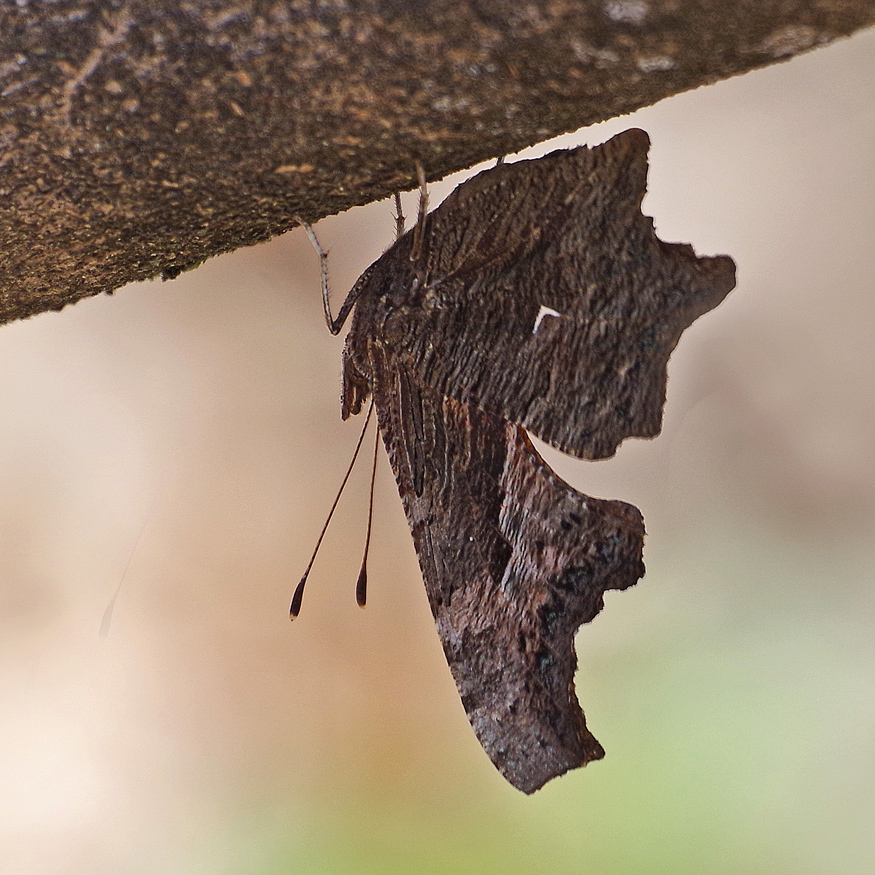
Early spring butterflies (and other insects) must have a way to get warm and stay warm (to this end, they are often hairier than later-season species); Gray Commas often warm up by basking in the sun (they have favorite perches), and they can also generate heat by shivering the muscles in their thorax (muscular thermogenesis).
It’s not often, when the BugLady researches insects, that the dramatic plot twist concerns the insect’s diet. The Gray Comma’s menu looks pretty straightforward on the face of it, but there’s a backstory that the BugLady heard a very long time ago and then forgot. Like other butterflies that emerge early, commas rarely visit flowers, preferring to sip the juices of rotting fruits, carrion, and dung, to visit sap drips, and to glean minerals from damp soil. Caterpillars https://bugguide.net/node/view/937966/bgimage feed on the undersides of gooseberry leaves, and the butterflies readily adopted European gooseberries that were introduced by the Settlers (the caterpillars were considered pests of cultivated gooseberries in some places). Food was plentiful. Life was good.
The Butterflies of Massachusetts website tells us what happened next: “Then, around 1910, an American nurseryman imported thousands of white pine seedlings which were infected with European white pine blister rust, for which Ribes plant species are the alternate hosts. Our native white pine, Pinus strobus was not resistant, and this commercially important species was threatened. To protect the lumber industry, importing or cultivating all currants and gooseberries was banned in most New England states. In the 1920’s and 1930s both native and cultivated Ribes plants were ripped up all across New England and the Great Lakes areas, as well as further west. By 1966 the ban was lifted in many areas, but is still in place in Massachusetts (Cullina 2002: 221-2). The host plants for Gray Comma therefore declined dramatically, as did the butterfly.” (Since that was written, limited quantities of Ribes may be planted in Massachusetts, by permit only. All clear in Wisconsin since 1966.)
Fun Fact about Gray Commas: their caterpillars rest below the leaf in a U-shape, hanging on with only their middle set of prolegs (the fleshy, “false” legs behind the three pairs of true legs on the thorax https://bugguide.net/node/view/1578095/bgimage). When they’re alarmed, they wave their spiny front and rear ends around, which apparently makes a predator think again.
May is American Wetlands Month! Wetlands support vast numbers of insects as temporary nurseries (for dragonflies and damselflies and more), as permanent homes, and as hunting grounds.
Go outside – appreciate a wetland!
Kate Redmond, The BugLady
Bug of the Week archives:
http://uwm.edu/field-station/category/bug-of-the-week/
